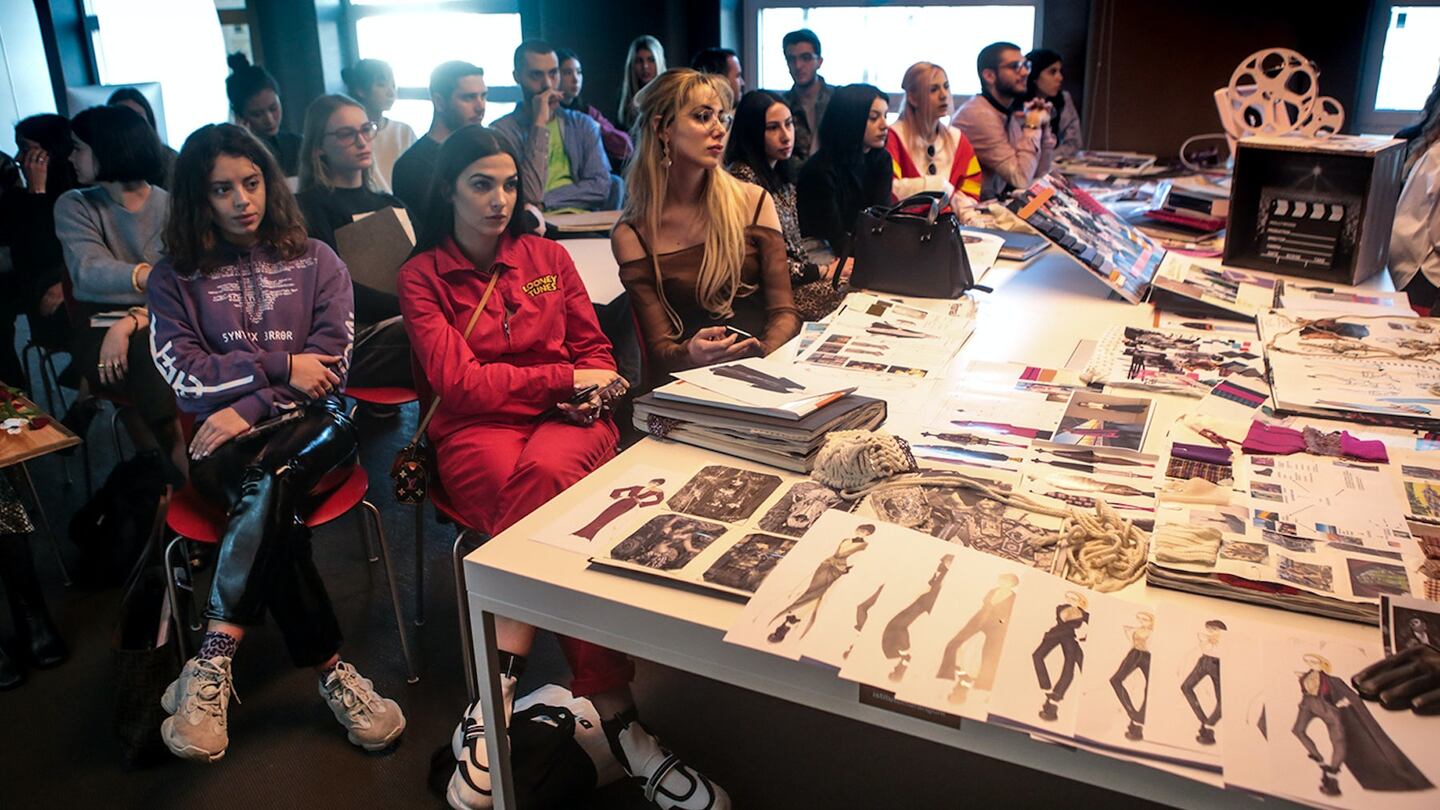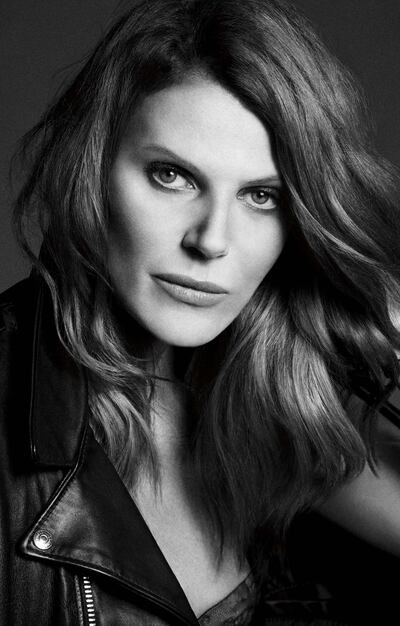
The Business of Fashion
Agenda-setting intelligence, analysis and advice for the global fashion community.

Agenda-setting intelligence, analysis and advice for the global fashion community.

MILAN, Italy — Since Giulio Marangoni launched his clothing institute in Milan in 1935, the fashion school has opened a further seven sites across the globe: Florence, London, Paris, Miami, Shanghai, Shenzhen and Mumbai. Offering undergraduate and postgraduate courses in fashion, art and design, Istituto Marangoni has a community of over 4,000 students — who hail from more than 100 countries.
In 2018, Istituto Marangoni appointed the seasoned stylist, Vogue editor, creative consultant and founder of her eponymous fashion and lifestyle blog, Anna dello Russo, as its international brand ambassador and as scientific director of its Milan campus. Mentored by the late Franca Sozzani, Russo's 30-year career as a fashion journalist includes 18 years at Vogue Italia, 6 years leading the creative direction of L'Uomo Vogue and her current position as editor-at-large for Vogue Japan.

Anna Dello Russo, scientific director and brand ambassador of
Istituto Marangoni | Source: Courtesy
Launching her role at the school with a "Playground" — a year-long, talent contest-inspired course, in which students work collaboratively and present to a panel of designers, including Marco de Vincenzo, Alessandro Dell'Acqua, Andrea Incontri and GCDS's Giuliano Calza — the experience was designed as a "mirror" to the fashion industry.
ADVERTISEMENT
Now, BoF meets Anna dello Russo to discuss why she took on a mentorship role at Marangoni, coaching through example, and her desire to learn from the next generation.
Why did you choose to accept a mentor role at Istituto Marangoni?
When you have a mentor like Franca Sozzani as I did, they change your life. She made me who I am professionally, because I got the right example and the right advice. There was no room for mistakes, no lowering the bar. Every time was like a Champion’s League final. There were no half measures.
Today, I think the future of fashion is very confused. The best thing to do is to go back to school, to understand what’s going on. The fashion system has changed so quickly and everything has become brand new, so for me, it’s the right time to go back to study, to really go deeper into the subject matter and reflect. In this role, I always want to be the first to say, “I’m with you. I’m not above you — you teach me a lot and I will teach you a lot too.”
When I arrived at Istituto Marangoni in 2018, my sense of responsibility was very strong. There’s a lot of responsibility when you are a teacher and a role model. I want to give these students the best message I can. I want to really motivate them.
What elements of your experience are most valuable to students?
You can arrive in fashion from many different points of view, but because I came from the south of Italy, I completed all the proper steps. I went through school and on to university, I did an MA and then took professional qualifications as a journalist. I think it was my destiny to return to school. It was the perfect process to become a teacher or a lecturer. But 30 years in fashion is a good legacy to share with a new generation of students.
When you get older in your career, you get very conscious about experience, like a grandfather or grandmother in the family. I want to be the best coach I can be. This is what I used to do in my career at Vogue with all my assistants. Being a coach is first of all about setting a good example, and secondly, it is about giving them the right motivation and the right discipline to achieve their dream. When I used to be editor-in-chief of L’Uomo Vogue, I learnt so much from Franca Sozzani at the time. It taught me to always develop my young assistants.
ADVERTISEMENT
How have you designed the student activities to meet industry needs?
I immediately decided to follow a workshop approach, or as I call them, a “Playground.” I want to coach the students in a modern way that gets their attention — talk to them in ways that they will respond to. We decided to work like a talent contest, like X-Factor for example. A competition, but in a good way — with teamwork, not as individuals. We put the students in creative teams throughout the year and it is very practical. During the contest, I had lots of young designers work with the students as judges, including Giuliano Calza, Marco de Vincenzo, Andrea Incontri and Alessandro Dell'Acqua. It was a great experience because during the Playground, it prompted really interesting discussions with the students.
It is easy to jump into the industry — but to be able to stay, you need to seek discipline.
I like to work this way because working together, with cooperation, means students understand their part in things and what they actually want to do. It’s more spontaneous that way. I don’t want to say, “This is good,” or, “This is not good.” I want to give the students the tools to motivate them to be better. I don’t want to be a teacher saying, “Fashion started here...” Instead, I share advice like, “You have to be really careful about what you say, what you want to share.”
How much opportunity do you have to interact with students?
Every time I go to London or Paris, I do a lecture or a master class, or some form of special meeting with students. Then, in Milan, I am the scientific director. I started a year ago and so far, we have launched the Playground in Milan, which finishes in May this year. Next year, we will see. I don’t want to be repetitive. I want to evolve what we are doing constantly to reflect what’s going on. Fashion is always in the moment. It changes so quickly. I want to give them the tools to understand fashion in the future, which is more difficult.
How would you summarise your advice to students in lectures?
Always work where you don’t think you have to work. If you have talent, you need to develop opposite disciplines because you already have the talent. For example, if you are too disciplined, you need to work on being more free — on lightness, on flexibility. Sometimes, it is easy to jump into the industry — but to be able to stay, you need to seek discipline and to have really strong foundations. When there’s a crash in the industry, you need to be flexible. You need to have a large structure of knowledge and experience underneath your work. This is what I want to tell them. You can have a great idea, I totally agree with that — that’s why we love new generations. In fashion, we always look for the new. But after that, you have to build yourself up to stand in this business.
This is a sponsored feature paid for by Istituto Marangoni as part of a BoF Education partnership. To learn more about Istituto Marangoni, please click here.
From analysis of the global fashion and beauty industries to career and personal advice, BoF’s founder and CEO, Imran Amed, will be answering your questions on Sunday, February 18, 2024 during London Fashion Week.
The State of Fashion 2024 breaks down the 10 themes that will define the industry in the year ahead.
Imran Amed reviews the most important fashion stories of the year and shares his predictions on what this means for the industry in 2024.
After three days of inspiring talks, guests closed out BoF’s gathering for big thinkers with a black tie gala followed by an intimate performance from Rita Ora — guest starring Billy Porter.